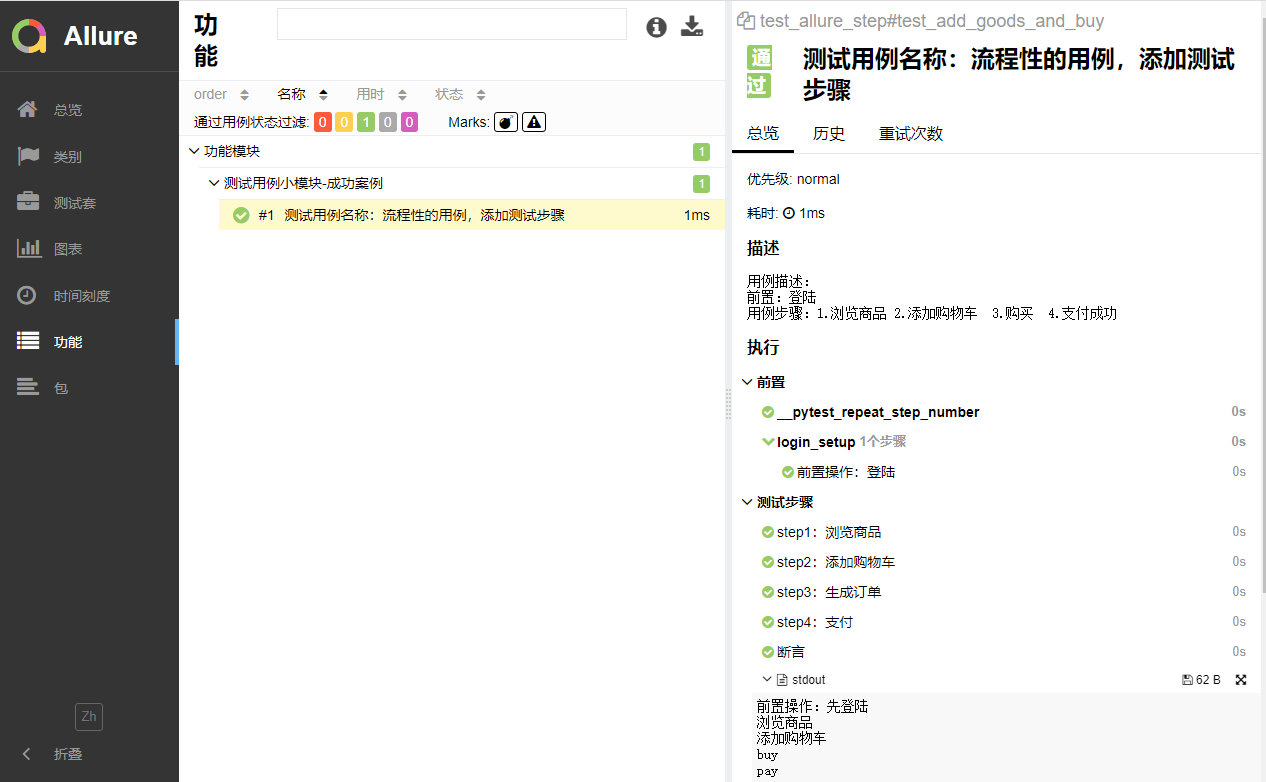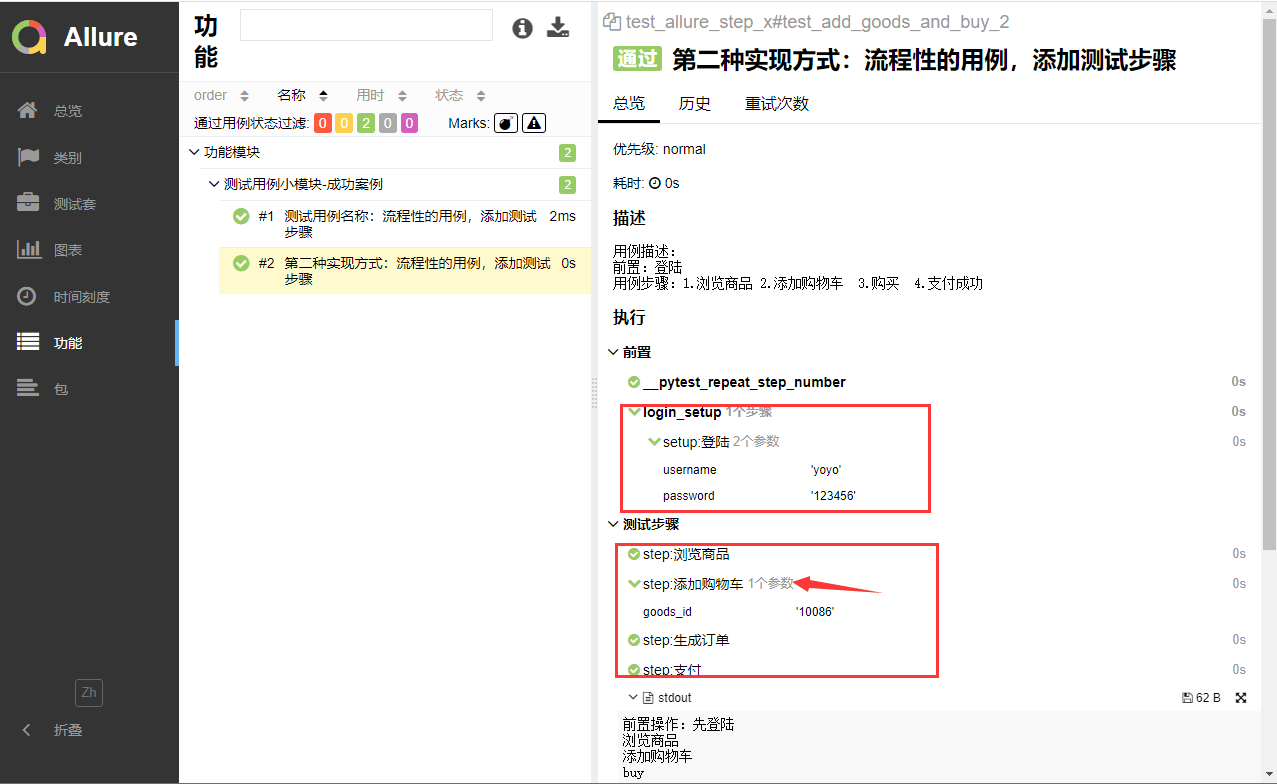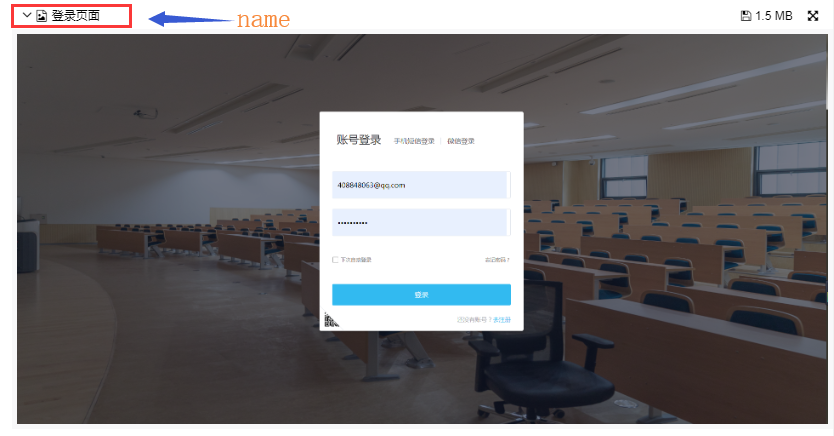allure step 编写测试用例的两种方式
1.方式一:
测试用例中with allure.step():
# common_fucntion.py import allure import pytest ''' 流程性的用例,添加测试步骤,让用例更清晰 用例步骤:1.登陆, 2.浏览商品 3.添加购物车 4.生成订单 5.支付成功 ''' def login(username, password): '''登陆''' print("前置操作:先登陆") def open_goods(): '''浏览商品''' print("浏览商品") def add_shopping_cart(goods_id="10086"): '''添加购物车''' print("添加购物车") def buy_goods(): '''生成订单''' print("buy") def pay_goods(): '''支付''' print("pay")
test_allure_step.py
# test_allure_step.py import allure import pytest from .common_function import * ''' 流程性的用例,添加测试步骤,让用例更清晰 用例步骤:1.登陆, 2.浏览商品 3.添加购物车 4.生成订单 5.支付成功 ''' @pytest.fixture(scope="session") def login_setup(): login("yoyo", "123456") @allure.feature("功能模块") @allure.story("测试用例小模块-成功案例") @allure.title("测试用例名称:流程性的用例,添加测试步骤") def test_add_goods_and_buy(login_setup): ''' 用例描述: 前置:登陆 用例步骤:1.浏览商品 2.添加购物车 3.购买 4.支付成功 ''' with allure.step("step1:浏览商品"): open_goods() with allure.step("step2:添加购物车"): add_shopping_cart() with allure.step("step3:生成订单"): buy_goods() with allure.step("step4:支付"): pay_goods() with allure.step("断言"): assert 1 == 1
测试报告

2.方式二:
直接使用allure.step() 装饰器定义在步骤的函数上面
import allure import pytest ''' 流程性的用例,添加测试步骤,让用例更清晰 用例步骤:1.登陆, 2.浏览商品 3.添加购物车 4.生成订单 5.支付成功 ''' @allure.step("setup:登陆") def login(username, password): '''登陆''' print("前置操作:先登陆") @allure.step("step:浏览商品") def open_goods(): '''浏览商品''' print("浏览商品") @allure.step("step:添加购物车") def add_shopping_cart(goods_id="10086"): '''添加购物车''' print("添加购物车") @allure.step("step:生成订单") def buy_goods(): '''生成订单''' print("buy") @allure.step("step:支付") def pay_goods(): '''支付''' print("pay")
用例
import allure import pytest from .common_function import * # 作者:上海-悠悠 QQ交流群:779429633 @pytest.fixture(scope="session") def login_setup(): login("yoyo", "123456") @allure.feature("功能模块") @allure.story("测试用例小模块-成功案例") @allure.title("第二种实现方式:流程性的用例,添加测试步骤") def test_add_goods_and_buy_2(login_setup): ''' 用例描述: 前置:登陆 用例步骤:1.浏览商品 2.添加购物车 3.购买 4.支付成功 ''' open_goods() add_shopping_cart(goods_id="10086") buy_goods() pay_goods() assert 1 == 1
报告

3.两种方式比较
使用 with allure.step("step:步骤") 这种方式代码可读性更好一点,但不会带上函数里面的传参和对应的值。
使用 @allure.step("step:步骤") 这种方式会带上函数的传参和对应的值。
这两种方式结合起来使用,才能更好的展示测试报告!
结合使用案例:
with allure step(): 可以集成一些截图,通过attach来格式化输出报告





 浙公网安备 33010602011771号
浙公网安备 33010602011771号